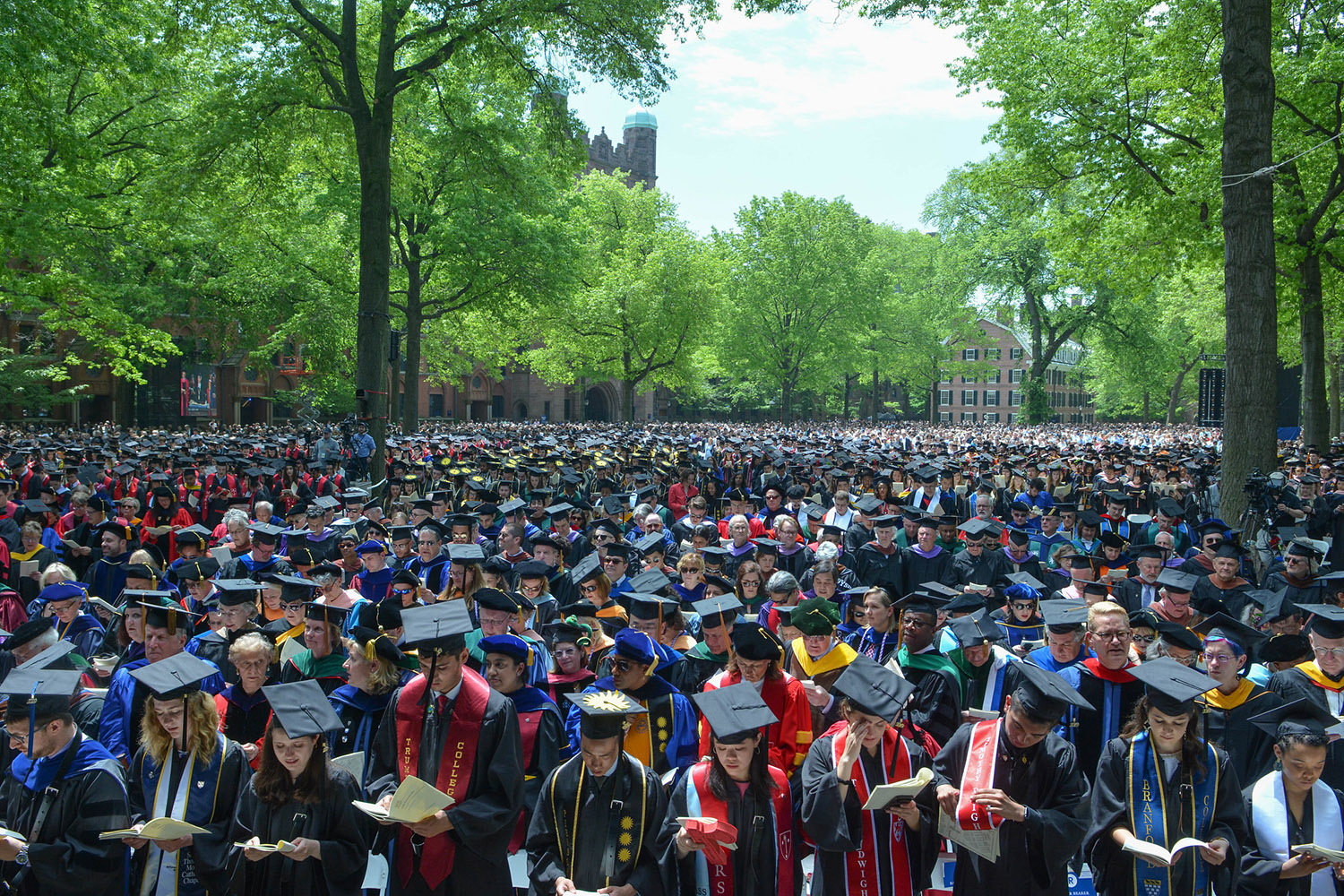
Yale News
In the last four years, Yale College has seen changes to its student body — Yale now has 600 more students from a wider array of socioeconomic and geographic backgrounds, according to data from the Office of Undergraduate Admissions.
The office recently collected and presented data about Yale’s changing demographics in the past four years to the Yale College Dean’s Office. This data does not provide official figures, and does not include transfers, withdrawals nor Eli Whitney students. Still, the numbers serve as a general estimate that is based on data from student applications to the college, said Mark Dunn, the director of outreach and recruitment and associate director at the Office of Undergraduate Admissions.
During the 2016–17 academic year, the Yale student body had 5,481 students, but that number now stands at 6,115 students for the 2019–20 academic year. In addition, the number of U.S. citizens or permanent residents who identify as minorities has increased, as has the number of first-generation, low-income students. According to Woodbridge Fellow Jorge Anaya ’19, these demographic shifts have changed campus culture “dramatically over the last few years,” specifically with regards to the number of FGLI students.
“The term FGLI is a term that only recently became normalized on campus, and I actually can’t remember ever hearing the term during my first year at Yale,” Anaya said. “I think Yale is changing in the right direction in terms of services and resources that it now offers FGLI students, but I think there is still much room for growth.”
According to Dunn, the most significant change in the Yale student body is the increase in FGLI students. Dunn said the number of first generation students has increased 33 percent over the past four years. During that time, the number of Pell Grant recipients — a subsidy the federal government provides for students who need it to pay for college — at Yale has increased by around 38 percent.
The changing student body has also prompted the Yale College Dean’s Office to implement policy changes that better serve Yale students. One example, according to Dean of Yale College Marvin Chun, is the creation of First-Year Scholars at Yale program. According to Chun, FSY programs aim to serve the changing student body.
“During the school year, we have academic strategies,” Chun said. “That includes academic strategies, which is providing academic support, and helping teach students how to do college that’s offered through the [Poorvu] Center for Teaching and Learning. And then in addition, we have the FGLI ambassadors, who are fellow students who help mentor our FGLI students.”
These changes, Chun said, are motivated by “our intention to increase the proportion of students here who are come from first-gen, low income backgrounds.”
Anaya said his work as a Woodbridge Fellow in the Dean’s Office and the Poorvu Center gives him an opportunity to help current students. He added that Yale can increase the number of administrators and staff members that are focused on FGLI initiatives and resources to better support a diverse array of students.
In addition to an increase in FGLI students, the data also point to a significant increase — 31 percent since 2016 — in Yale College students who identify as domestic minorities. More than 50 percent of U.S. citizens and permanent residents in the class of 2023 self-identified as a race or ethnicity other than white.
Former Yale College Council President Saloni Rao ’20 noted that many of last year’s policy pushes focused on increasing outreach to a more diverse community.
“First, we tried to focus internally,” Rao said. “This year’s YCC is more diverse than ever. We have our first black student body president and [who is] doing amazing. We tried to shine a light specifically on groups that represented certain identities.”
Along with the increased socioeconomic diversity, the admissions office also noted an increase in the number of students who are intending to major in STEM fields, which has risen by around 20 percent. This increase has been naturally occurring for the past few years and can be partially attributed to increasing interest in STEM fields nationwide, Dunn said.
Yale’s student body has also changed with regard to people’s hometowns. Dunn said these changes reflect the broader population shift in the U.S. There has been an increase in students from the Southeast and Southwest regions of the U.S. by around 23 percent since 2016. The changes in international and Midwestern students have been slower, with an increase around 6 percent in that time frame.
Rao also added that, given the changes, students are becoming a lot closer through more robust conversations about socioeconomic status, race and sexual orientation. Rao believes these topics have “been increasing in frequency both inside the classroom and outside the classroom.”
According to Dunn, the class of 2020 is the last small class to graduate from Yale.
Kelly Wei | kelly.wei@yale.edu







